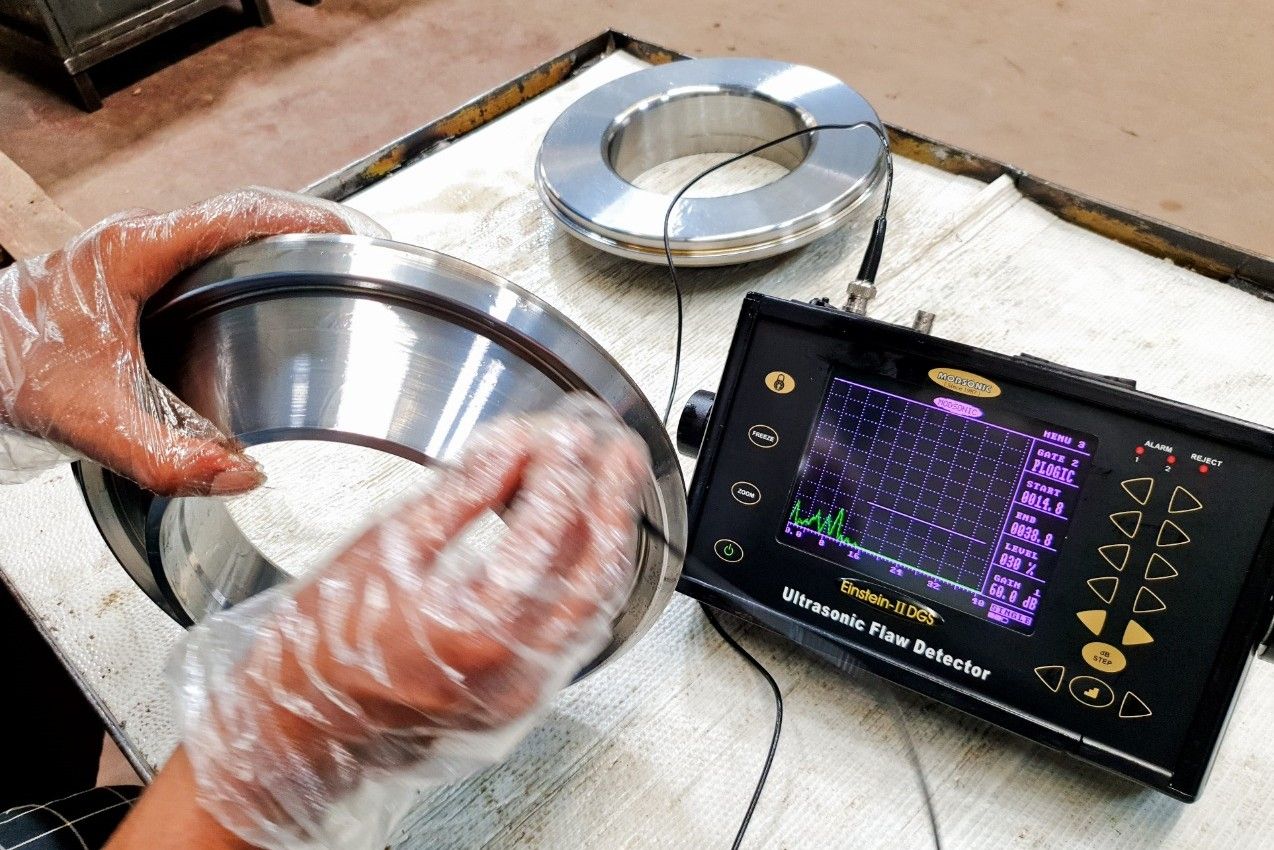
Ever wondered how engineers detect hidden flaws in materials without causing any damage? Enter the ultrasonic flaw detector. This nifty device uses high-frequency sound waves to find cracks, voids, and other imperfections in metals, plastics, and composites. Imagine a superhero with X-ray vision, but for materials! These detectors are essential in industries like aerospace, automotive, and construction, ensuring safety and reliability. From checking airplane wings to inspecting pipelines, ultrasonic flaw detectors play a crucial role. Curious about how they work or their history? Stick around as we dive into 30 fascinating facts about these unsung heroes of quality control.
What is an Ultrasonic Flaw Detector?
An ultrasonic flaw detector is a device used to find imperfections in materials. It uses high-frequency sound waves to detect cracks, voids, and other flaws that might not be visible to the naked eye. This technology is crucial in industries where material integrity is paramount.
- Ultrasonic flaw detectors use sound waves that are above the range of human hearing, typically above 20 kHz.
- These devices can detect flaws as small as 0.1 mm in size.
- They are commonly used in industries like aerospace, automotive, and construction.
- The technology can inspect both metallic and non-metallic materials.
- It can be used to measure the thickness of materials, ensuring they meet safety standards.
How Does an Ultrasonic Flaw Detector Work?
Understanding the working principle of an ultrasonic flaw detector helps appreciate its importance. The device sends sound waves into a material and measures the waves that are reflected back.
- A transducer generates the ultrasonic waves and receives the echoes.
- The time it takes for the echo to return helps determine the location and size of the flaw.
- The device can display results in real-time, allowing for immediate analysis.
- Different materials require different frequencies for optimal detection.
- Coupling agents like gels or oils are used to ensure efficient transmission of sound waves.
Applications of Ultrasonic Flaw Detectors
Ultrasonic flaw detectors have a wide range of applications, making them indispensable in various fields.
- They are used in weld inspection to ensure the integrity of welded joints.
- In the oil and gas industry, they help inspect pipelines for corrosion and cracks.
- Railway tracks are regularly inspected using these devices to prevent accidents.
- They are used in power plants to check the integrity of critical components.
- Medical devices like prosthetics are inspected to ensure they meet safety standards.
Advantages of Using Ultrasonic Flaw Detectors
The benefits of using ultrasonic flaw detectors are numerous, making them a preferred choice for many industries.
- They provide non-destructive testing, meaning the material being inspected is not damaged.
- The results are highly accurate, allowing for precise identification of flaws.
- They can inspect complex shapes and sizes, offering versatility.
- The technology is portable, making it easy to use in various locations.
- It is cost-effective compared to other testing methods.
Limitations of Ultrasonic Flaw Detectors
While ultrasonic flaw detectors are highly effective, they do have some limitations.
- They require a skilled operator to interpret the results accurately.
- The surface of the material needs to be smooth for effective testing.
- Certain materials, like coarse-grained metals, can scatter the sound waves, making detection difficult.
- The initial cost of the equipment can be high.
- They may not detect very small flaws in thick materials.
Future of Ultrasonic Flaw Detectors
The future looks promising for ultrasonic flaw detectors, with advancements in technology making them even more effective.
- Artificial intelligence is being integrated to improve flaw detection and analysis.
- Wireless technology is making these devices more portable and easier to use.
- 3D imaging capabilities are being developed to provide a more comprehensive view of the material.
- Automated systems are being created to reduce the need for skilled operators.
- Miniaturization of components is making the devices smaller and more efficient.
Ultrasonic flaw detectors continue to evolve, offering better accuracy, portability, and ease of use. Their role in ensuring the safety and integrity of materials across various industries cannot be overstated.
The Final Word on Ultrasonic Flaw Detectors
Ultrasonic flaw detectors are game-changers in the world of non-destructive testing. They help identify cracks, voids, and other imperfections in materials without causing any damage. These devices use high-frequency sound waves to detect flaws, making them essential in industries like aerospace, automotive, and construction.
Understanding how they work and their applications can save time, money, and even lives. Whether you're a professional in the field or just curious, knowing these facts can give you a better appreciation of the technology.
So, next time you see a perfectly constructed bridge or a flawless airplane wing, remember the role ultrasonic flaw detectors played in ensuring their safety and reliability. Keep these facts in mind, and you'll see the world of material testing in a whole new light.
Was this page helpful?
Our commitment to delivering trustworthy and engaging content is at the heart of what we do. Each fact on our site is contributed by real users like you, bringing a wealth of diverse insights and information. To ensure the highest standards of accuracy and reliability, our dedicated editors meticulously review each submission. This process guarantees that the facts we share are not only fascinating but also credible. Trust in our commitment to quality and authenticity as you explore and learn with us.
